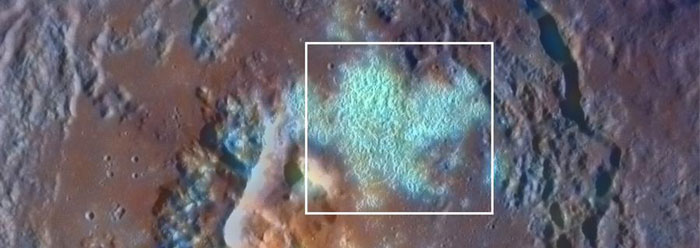NASA's Messenger spacecraft mission to Mercury has given scientists the opportunity to learn more about the properties of the solar system's innermost planet. After supposedly billions of years since its formation, the planet should be dead, or geologically inactive. New data from Messenger, however, show that Mercury remains active and is still generating surface features.
Before the Messenger data acquisition, astronomers observed that the sunny side of Mercury is hot enough to melt lead, and like other rocky objects in the solar system, many craters pockmark the planet's surface. In early 2011, Messenger carefully maneuvered into orbit and took photographs with unprecedented detail.
Images of the planet's surface revealed unusual, irregularly shaped hollows or depressions with rounded edges that were comprised of material so bright that many showed "high reflectance halos." Researchers hadn't expected to find such highly reflective features, which "appear fresh and lack superposed impact craters, implying that they are relatively young," according to the report published in Science.1
The study authors evaluated several possible causes for these fresh-looking features and ultimately described the most likely explanation as outgassing of volatile material from below the planet surface.
Of course, this conclusion only prompted new questions. How did Mercury obtain volatile chemicals in the first place, especially since its proximity to the sun should have burned them all off when the planet was supposedly forming? And, assuming they somehow did form, why would any such materials stay put for billions of years? After all, they're volatile. And how, after billions of years, does the planet still have the energy to expel the volatile-containing material through the planet's crust?
But if Mercury was created, then its volatile and non-volatile constituents would have been formed on purpose. And if Mercury was created only thousands of years ago, as the Bible clearly indicates, then it could easily have plenty of residual energy.
The study authors wrote, "Mercury is a small rocky-metal world whose internal geological activity was generally thought to have ended long ago. The presence of potentially recent surface modification implies that Mercury's nonimpact geological evolution may still be ongoing."1
Mercury's active geology is the exact opposite of long-age predictions—but it is just what one would expect if Mercury is only thousands of years old.
Reference
- Blewett, D. T. et al. 2011. Hollows on Mercury: MESSENGER Evidence for Geologically Recent Volatile-Related Activity. Science. 333 (6051): 1856-1859.
Image credit: NASA
* Mr. Thomas is Science Writer at the Institute for Creation Research.
Article posted on October 24, 2011.























